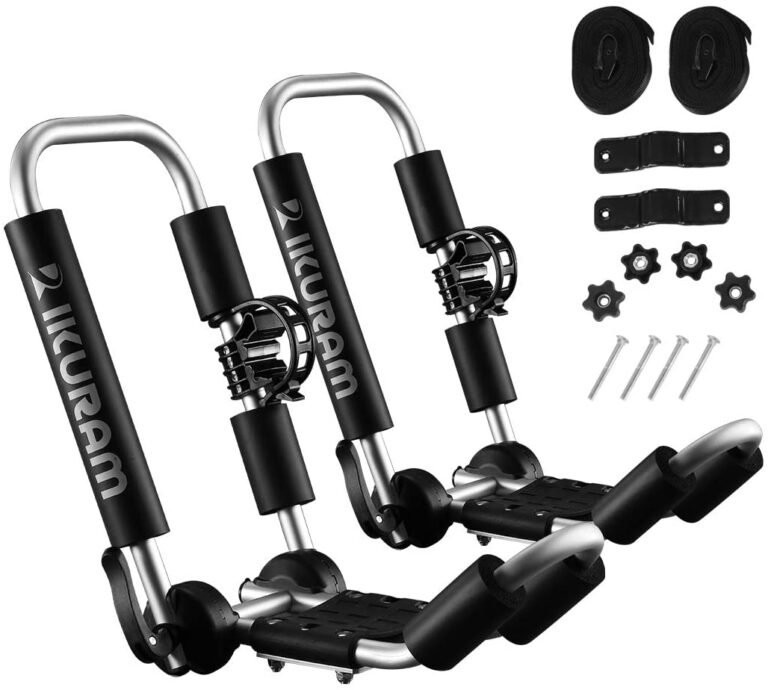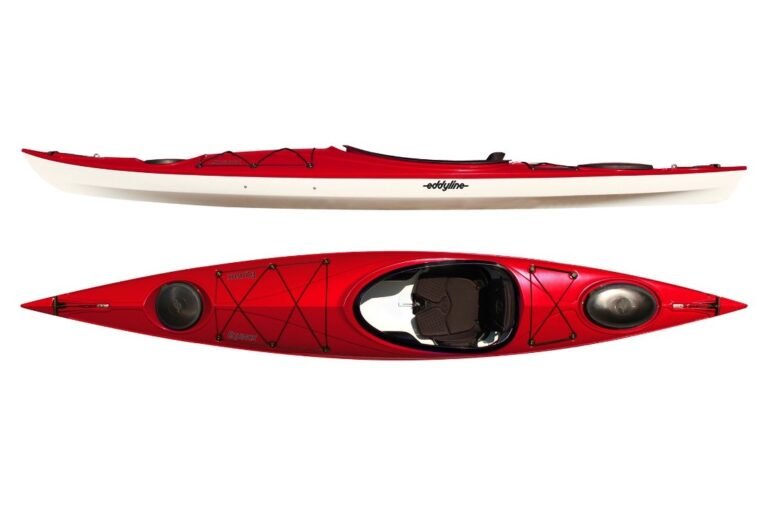How Long Does a Kayak Helmet Last?

While kayaking is an exciting sport, your safety is paramount. A kayak helmet is one of the essential kayaking safety gear. This headgear is designed to protect your skull and brain from potential risks during your kayaking experience.
The helmet protects against head injuries caused by a variety of circumstances such as accidents with rocks, capsizing, or choppy waters that toss you around. How your helmet is used and maintained affects the lifespan of the helmet.
Factors Affecting the Lifespan of a Kayak Helmet
Understanding the factors that impact the lifespan of your kayak helmet is crucial for maintaining the helmet, and of course, your safety while out on the water.
Frequency of Use
How often you use your helmet plays a significant role in determining its lifespan. For kayakers that hit the water regularly, your helmet may experience more wear and tear than occasional paddlers. Frequent use can lead to quicker degradation.
Your Kayaking Environment
The environment in which your helmet is utilized is another aspect that impacts its lifespan. Prolonged exposure to sunshine, severe temperatures (hot or cold), as well as the type of water you kayak in, can all cause long-term harm to your helmet.
UV radiation can weaken the helmet’s materials making them less effective in absorbing impacts while saltwater can be corrosive to certain materials used in the helmet’s construction. Helmets left in extremely hot conditions may experience warping or deformation, while cold temperatures can make materials brittle.
Furthermore, the nature and frequency of impacts your helmet experiences can significantly influence its lifespan. If you regularly engage in high-impact kayaking activities such as navigating whitewater rapids, your helmet may endure more significant stress, while kayaking in calm waters or less challenging environments may result in fewer impacts on your helmet.
When to Get Rid Of A Kayak Helmet
You don’t have to wait for visible signs of wear and tear before you change your kayak helmet. While a regular inspection of your kayak helmet is good, not all signs of damage are visible. If maintained properly, you can use the helmet for 3 years, but shouldn’t be longer.
Ideally, your kayak helmet should be replaced after 2 to 3 years of continuous use as constant exposure to sunlight destroys the helmet’s material. Your instinct plays a huge role in ensuring your safety, so if you no longer feel comfortable with your helmet, we suggest that you replace it with a better one.
Changing your kayak helmet won’t hurt you but using a worn-out kayak helmet can hurt you or even cost you your life. Also, always refer to the manufacturer’s guidelines and recommendations regarding the lifespan of your specific kayak helmet.
Manufacturers may provide information on the expected lifespan of their products based on usage patterns and materials. Consider upgrading your helmet if it has outlived its manufacturer’s advised lifespan.
Typically, kayak helmets are designed to withstand impacts from collisions and should last for a couple of years. However, the integrity of any helmet reduces with use. If you notice any sign of wear and tear, it is time to invest in a new one.
Signs of Wear and Tear in a Kayak Helmet
One of the most common signs of wear and tear is cracks: Inspect the outer shell of your kayak helmet for any visible cracks or fractures. As little as a hairline crack can compromise the structural integrity and reduce the ability of your helmet to absorb collisions and impacts effectively.
Discoloration and fading are two further signs of wear and strain: The color of your helmet will fade if it is constantly exposed to sunlight. While this may be purely cosmetic, it could also indicate UV damage that has weakened the helmet’s materials. Pay close attention to any significant changes in color or texture.
Loose straps and buckles are another sign of wear and tear: Check the helmet for frayed or loose straps and buckles. Your helmet needs to fit well so any issues with the helmet’s fastening system should be addressed promptly.
Ineffective impact absorption: If you notice that the helmet feels unusually soft and spongey, or if it fails to absorb impact as it used to, this may indicate that the inner padding has deteriorated or compressed over time.
This can compromise the helmet’s ability to protect your head from a real impact. Perform a simple impact absorption test by gently tapping the helmet with your knuckles.
Instability or poor fit is a sign of wear and tear: If the helmet wobbles, shifts, or no longer sits securely on your head, it may indicate that the straps or padding have worn out, making it less effective in protecting you during a kayaking accident.
Helmet Certification Standards
There are bodies that check to ensure the appropriate quality and safety of kayak helmets. Two prominent certifications to look for when purchasing a kayak helmet are ANSI (American National Standards Institute) and CE (Conformité Européene).
1. ANSI Certification
Helmets with ANSI certification meet specific safety standards set by the American National Standards Institute. ANSI-certified helmets are tested for impact resistance, durability, and other safety criteria. They are a reliable choice for kayakers seeking high-quality protective gear.
2. CE Certification
CE certification indicates that a helmet complies with European safety standards. CE-certified helmets undergo rigorous testing to ensure their performance in protecting against impacts. This certification is widely recognized in the kayaking community and offers an additional layer of assurance regarding a helmet’s safety features.
How To Choose the Right Kayak Helmet
Selecting the right kayak helmet depends on the type of kayaking you are engaging in and your personal preferences. For instance, whitewater kayaking and sea kayaking requires different types of helmet.
For whitewater kayaking, a full-coverage hard shell helmet is the best option because it gives maximum protection against potential impacts with rocks and turbulent water.
Sea kayaking on the other hand requires a half-coverage, soft shell helmet as it is a more comfortable choice and offers sufficient protection while prioritizing ventilation and comfort for long hours on calmer water.
Also, freestyle kayakers often require helmets that provide a snug fit and do not shift during tricks and maneuvers. Comfort and ventilation are key for recreational kayakers.
A lightweight, well-ventilated helmet with adjustable straps is more suitable. Regardless of the type of kayaking you are interested in, choose helmets with a secure strap system.
How To Extend The Lifespan of Your Kayak Helmet
Keeping your kayak helmet in good condition is not only cost-effective but also essential for your safety. Here are some excellent methods for extending the life of your helmet.
To begin with, regularly clean your kayak helmet to prevent the accumulation of dirt, salt, and other contaminants that can accelerate wear and tear. After each kayaking trip, rinse your helmet thoroughly with fresh water to remove salt and debris. Pay extra attention to crevices and vents.
When cleaning the surface of your helmet, use a mild, non-abrasive soap and a soft brush or cloth. The use of harsh chemicals or abrasive materials can damage the helmet.
If your helmet comes with a removable padding, when cleaning, remove and clean according to the manufacturer’s instructions. Ensure it’s completely dry before reinserting it.
The buckles and straps of your helmet should be kept in good condition. To avoid having stiff buckles and straps, periodically apply a silicone-based lubricant. This can also prevent corrosion of metal parts.
Your helmet should be kept in a helmet bag to protect your helmet during storage and transport. This protects your helmet from dust, UV rays, and potential damage from other gear. During storage, your helmet should be kept from direct sunlight.
A helmet cover shields your helmet from direct exposure to harmful elements and helps retain the color of your kayak helmet. Epoxy resin or the manufacturer’s repair kit can be used to patch up any small cracks or damage to the helmet’s outer shell.
To guarantee a safe and efficient repair, please follow the manufacturer’s instructions. But it’s important to keep in mind that some damage can be irreparable, so if the helmet is damaged, it’s best to replace it for your safety.
If the helmet’s padding shows signs of wear, compression, or deterioration, consider replacing it. Many manufacturers offer replacement padding kits designed specifically for their helmets. Replacing the padding will not only extend the helmet’s lifespan but also ensure a comfortable and secure fit.
Safeguarding your safety while kayaking is key, and your head helmet plays a pivotal role in ensuring your safety. A well-maintained kayak helmet can last you for years. However, if you notice signs of wear and tear, replace it promptly to ensure your continued safety.






